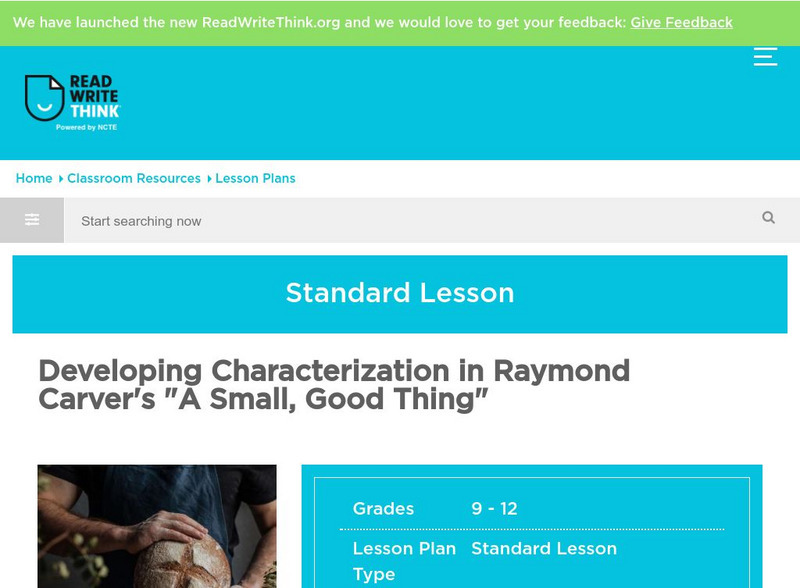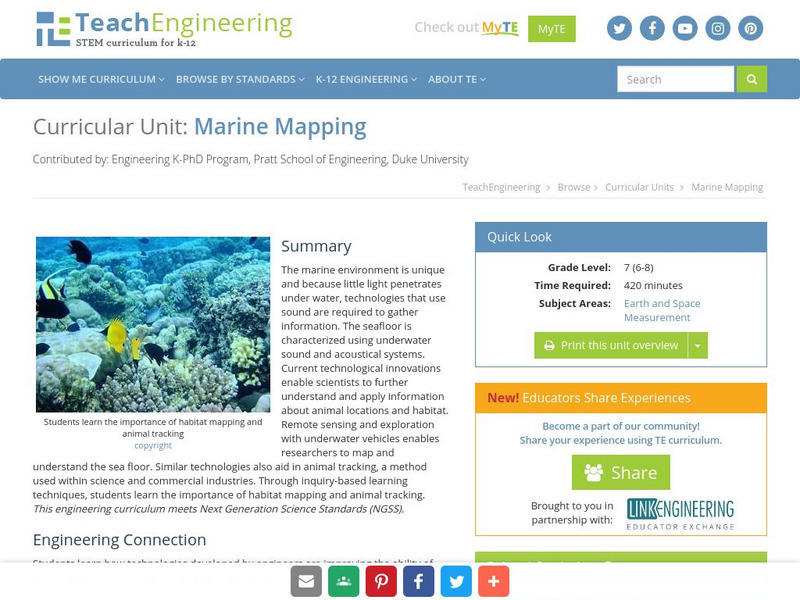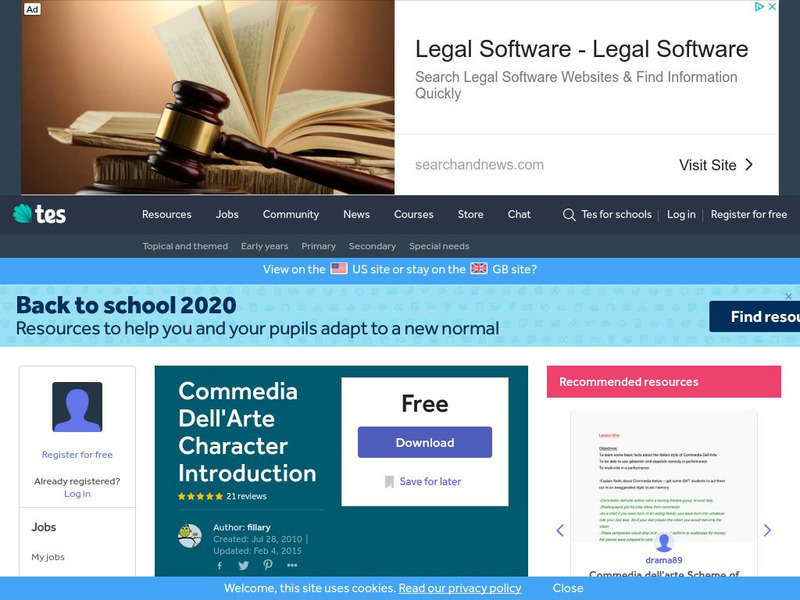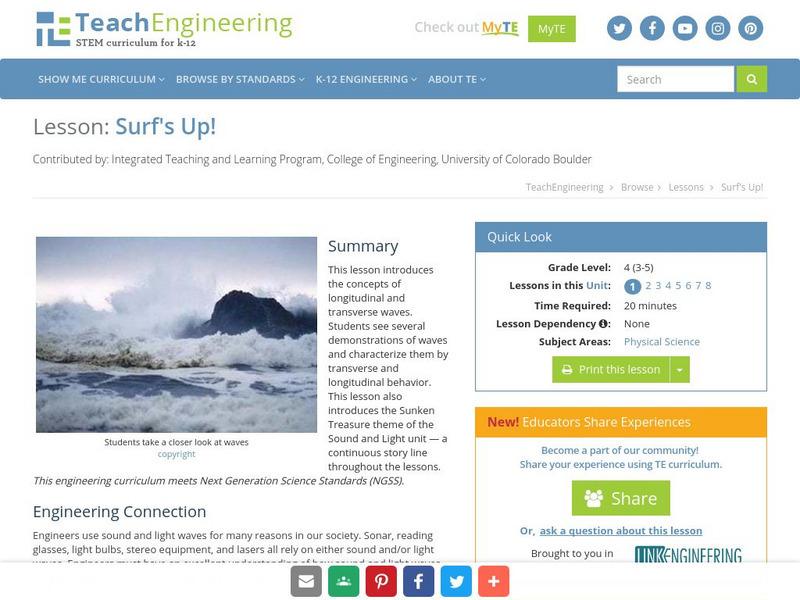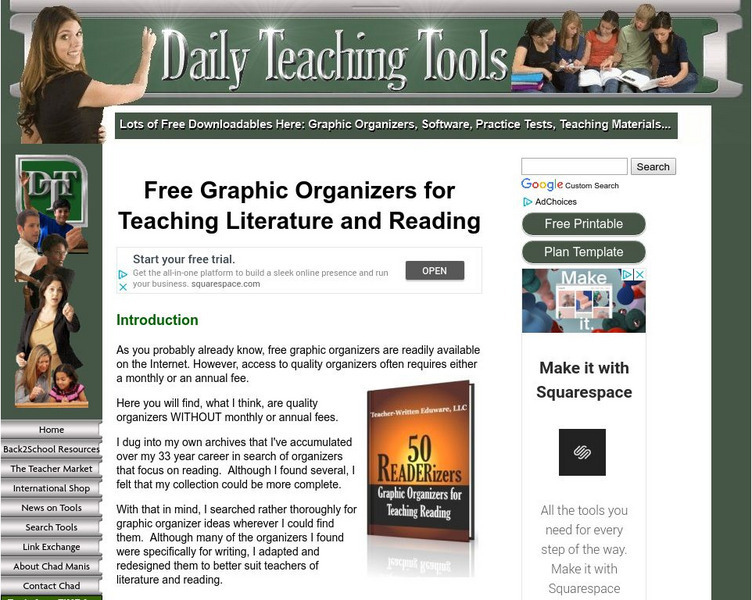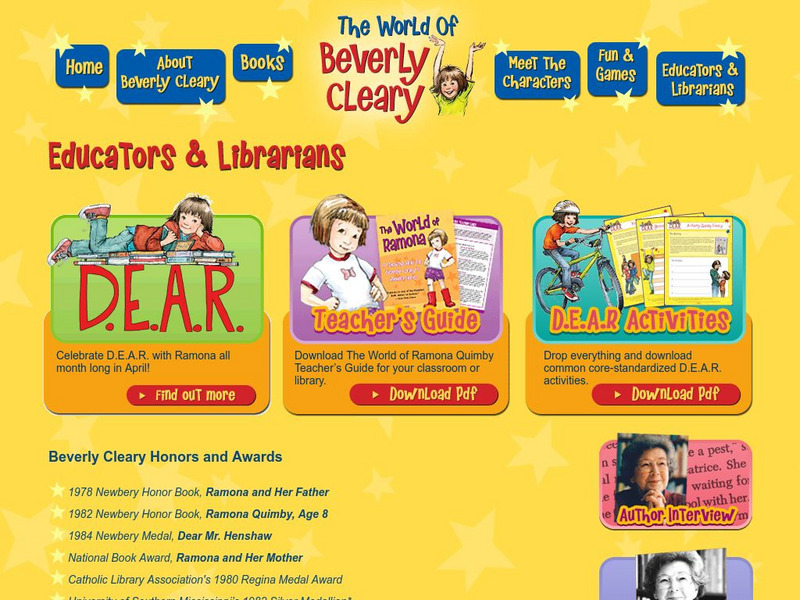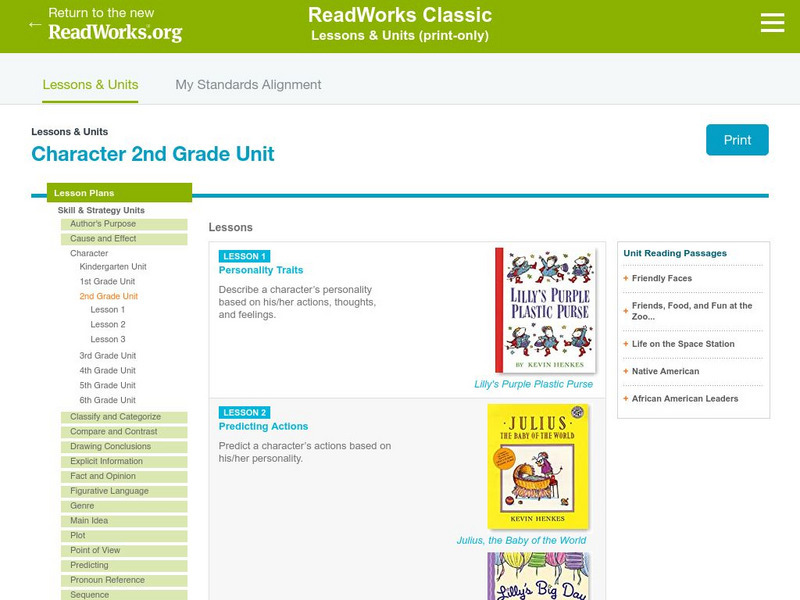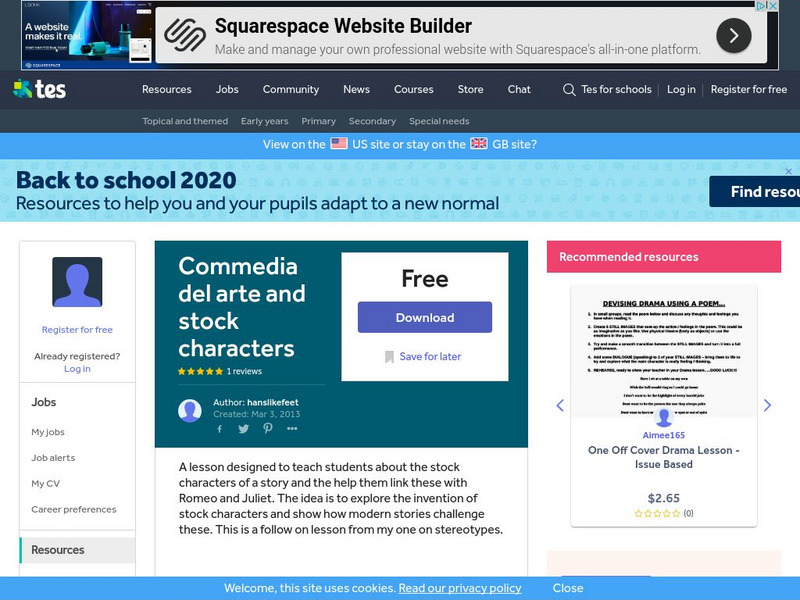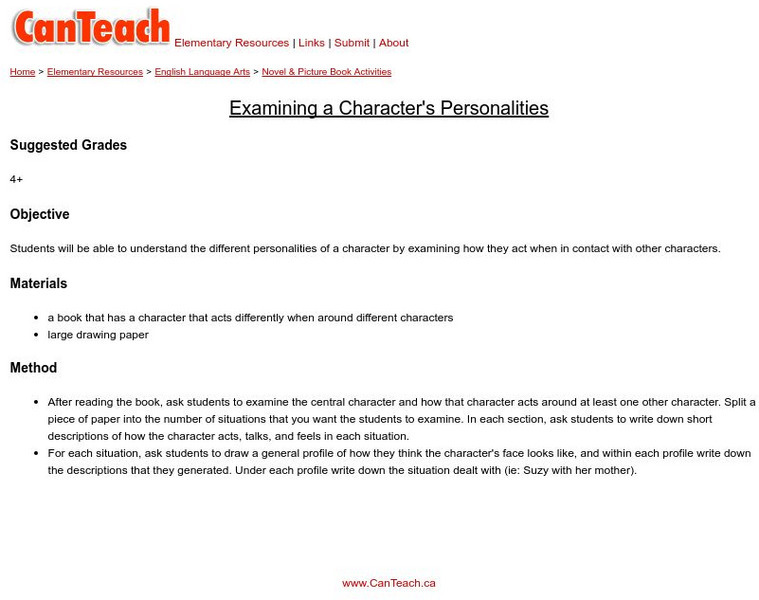ReadWriteThink
Read Write Think: Using Picture Books to Teach Characterization
Contains plans for two or three lessons that ask young scholars to examine characterization in picture books to use as models for their own writing. In addition to objectives and standards, this instructional plan contains links to sites...
ReadWriteThink
Read Write Think: Developing Characterization in Carver?s ?A Small, Good Thing
Contains plans for three lessons that teach characterization using Raymond Carver's short story "A Small, Good Thing." In addition to objectives and standards, this instructional plan contains links to PDF handouts and sites used in the...
British Library
British Library: Teaching Resources: Milton: Crime & Punishment in Paradise Lost
Through exploring characterization and setting in Paradise Lost, students will reflect on how transgressive actions and their consequences are presented, with particular reference to Books I, II, IX, and X. Included in this lesson are...
TeachEngineering
Teach Engineering: Marine Mapping
The marine environment is unique and requires technologies that can use sound to gather information since there is little light underwater. The seafloor is characterized using underwater sound and acoustical systems. Current...
TeachEngineering
Teach Engineering: Soil Core Sampling
Students learn about one method used in environmental site assessments. They practice soil sampling by creating soil cores, studying soil profiles and characterizing soil profiles in borehole logs. They use their analysis to make...
TeachEngineering
Teach Engineering: Hidden in Plain Sight
Steganography is the science and art of hiding messages in plain sight so only the sender and intended recipient know the existence of a message. Steganography can be characterized as security through obscurity. Through this lesson,...
British Library
British Library: Teaching Resources: King Lear: The Disintegration of the Social Structure
These activities encourage students to examine the tensions that characterized the political and social landscape of the early 17th century and to compare these with fears about the disintegration of the social structure expressed in...
TES Global
Tes: Commedia Dell'arte Character Introduction
[Free Registration/Login Required] This slide show introduces the major stock characters in Commedia Dell'Arte, a form of theatre characterized by masked "types," improvised dialogue, and a cast of colorful stock characters which began...
British Library
British Library: Teaching Resources: Aphra Behn, the Rover: Carnival
These activities allow students to explore how Aphra Behn uses character types and tropes associated with carnival in "The Rover". Students can relate this to the play's context of production, and comic theories relating to the...
British Library
British Library: Teaching Resources: Macbeth: Lady Macbeth
This varied series of activities is designed to encourage learners to exercise independence of thought when exploring the presentation of Lady Macbeth throughout the play. The tasks draw learners' attention to the varied ways in which...
British Library
British Library: Teaching Resources: Othello: Critical Approaches
This activity allows students to consider how different critical approaches can influence a reading of the play. Students will work in groups to explore different attitudes to Othello by looking at a range of texts from the past,...
British Library
British Library: Teaching Resources: Much Ado About Nothing: Comedy and Tragedy
Engaging with these sources will encourage students to examine the way Shakespeare approached his work, as well as examples of contemporary texts with similar themes, some of which are challenging. Included are discussion questions,...
British Library
British Library: Teaching Resources: Measure for Measure: A Problem Play?
What is Measure for Measure's problem? The play confronts us with questions about sex, morality, and power, which challenge us as readers and audiences. In these activities, students will debate why the play is so problematic, through...
TeachEngineering
Teach Engineering: Surf's Up!
This activity introduces the concepts of longitudinal and transverse waves. Students see several demonstrations of waves and characterize them by transverse and longitudinal behavior. This activity also introduces the Sunken Treasure...
Daily Teaching Tools
Daily Teaching Tools: Customizable Graphic Organizers
This Daily Teaching Tools resource provides a series of graphic organizers for reading students. Forms are provided for plot, character analysis, reading logs, and reading responses.
Other
The World of Beverly Cleary: Teaching Resources
A comprehensive guide to teaching Beverly Cleary's Ramona books. Includes material available as web pages as well as PDF formats. Also provides the words of Cleary herself when discussing characterization, as well as some unforgettable...
TeachEngineering
Teach Engineering: Earthquakes Living Lab: Epicenters and Magnitudes
Students learn how engineers characterize earthquakes through seismic data. Acting as engineers, they use real-world seismograph data to locate earthquake epicenters via triangulation and determine earthquake magnitudes.
TeachEngineering
Teach Engineering: Simple Coulter Counter
Students build and use a very basic Coulter electric sensing zone particle counter to count an unknown number of particles in a sample of "paint" to determine if enough particles per ml of paint exist to meet a quality standard. In a lab...
Read Works
Read Works: Grade 2: Three Lesson Unit: Character
[Free Registration/Login Required] A series of three lesson plans designed to teach students to recognize a character's personality traits, predict a character's actions, and describe a character using rich language. Lessons are based on...
New York Times
New York Times: Batman's Evolution
Audio slideshow explains differences in Batman characterizations that have evolved over time as the superhero, first created in 1939, moved across media formats from print, to television, to film. An interesting overview of a favorite...
British Library
British Library: Teaching Resources: Hamlet: Ophelia, Gender and Madness
In his portrayal of Hamlet and Ophelia, Shakespeare raises troubling questions about gender and madness. These activities encourage students to compare these two central characters, and how they have been used to reflect changing views...
TES Global
Tes: Commedia Dell'arte and Stock Characters
[Free Registration/Login Required] This is a slide show lesson on Commedia Dell'Arte and stock characters including a close activity on Commedia Dell'Arte, a definition of stock characters with examples, modern day stock characters, and...
Better Lesson
Better Lesson: Speaking and Listening: Collaborative Conversations
Students will partner read The Kite, by Alma Flor Ada. Then work together in small collaborative groups to describe the character of the mother, the children, or the kitten. Included in this lesson plan are video demonstrations,...
Can Teach
Can Teach: Examining a Character's Personalities
In this lesson plan students will be able to understand the different personalities of a character by examining how they act when in contact with other characters. Lesson plan indicated for 4th grade and above.

